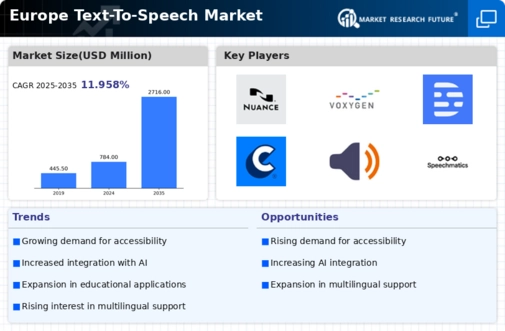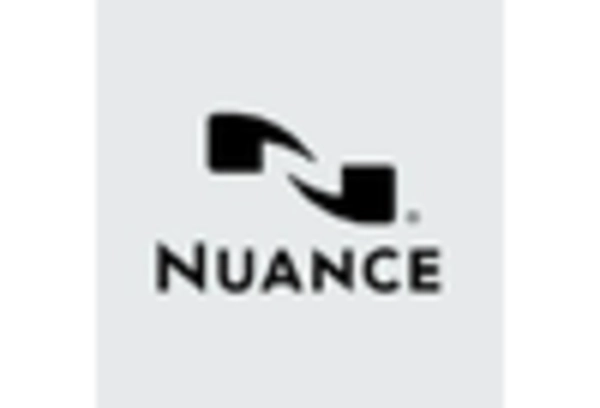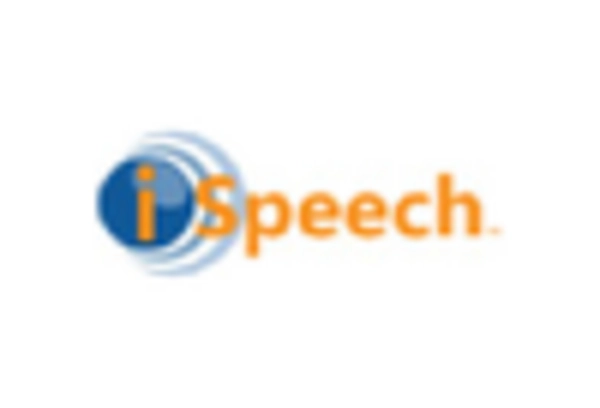The text to-speech market in Europe is characterized by a dynamic competitive landscape, driven by rapid technological advancements and increasing demand for accessibility solutions. Major players such as Google (US), Amazon (US), and Microsoft (US) are at the forefront, leveraging their extensive resources to innovate and expand their offerings. Google (US) focuses on enhancing its AI capabilities, particularly in natural language processing, which positions it as a leader in providing high-quality, context-aware speech synthesis. Amazon (US), through its AWS platform, emphasizes scalability and integration, catering to a diverse range of industries, while Microsoft (US) invests heavily in cloud-based solutions, aiming to enhance user experience through seamless integration with its existing software ecosystem. Collectively, these strategies foster a competitive environment that prioritizes innovation and user-centric solutions.
In terms of business tactics, companies are increasingly localizing their operations to better serve regional markets, optimizing supply chains to enhance efficiency. The competitive structure of the market appears moderately fragmented, with a mix of established giants and emerging players. This fragmentation allows for a variety of offerings, yet the influence of key players remains substantial, as they set industry standards and drive technological advancements.
In October 2025, Google (US) announced a partnership with a leading European accessibility organization to develop tailored text-to-speech solutions for individuals with disabilities. This strategic move not only enhances Google's commitment to social responsibility but also expands its market reach by addressing a critical need within the community. Such initiatives are likely to strengthen brand loyalty and position Google (US) as a socially conscious leader in the market.
In September 2025, Amazon (US) launched a new suite of text-to-speech tools specifically designed for educational institutions, enabling personalized learning experiences. This initiative reflects Amazon's strategy to penetrate the education sector, where the demand for adaptive learning technologies is on the rise. By catering to this niche, Amazon (US) could potentially capture a significant share of the educational market, further solidifying its competitive stance.
In August 2025, Microsoft (US) unveiled an advanced text-to-speech feature integrated into its Office 365 suite, enhancing productivity tools for businesses. This development underscores Microsoft's focus on integrating AI-driven solutions into its existing product lines, thereby increasing user engagement and satisfaction. Such innovations are likely to create a competitive edge, as businesses increasingly seek comprehensive solutions that streamline operations.
As of November 2025, current trends in the text to-speech market indicate a strong emphasis on digitalization, sustainability, and AI integration. Strategic alliances are becoming increasingly pivotal, as companies collaborate to enhance their technological capabilities and market reach. The competitive differentiation is expected to evolve, shifting from traditional price-based competition to a focus on innovation, technological advancement, and supply chain reliability. This transition suggests that companies that prioritize these aspects will likely emerge as leaders in the evolving landscape.


















Leave a Comment